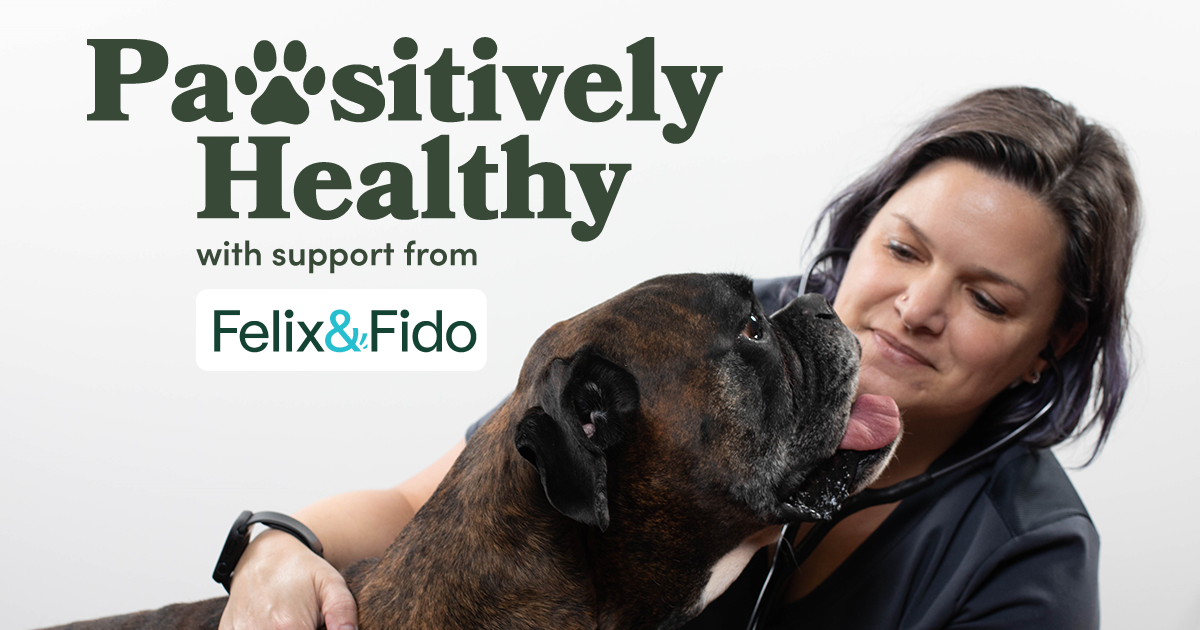
Dental health is an important part of caring for yourself, but did you know it’s just as important in dogs and cats? Are you able to recognize signs of poor dental health in your pets?
The slow onset of dental disease can make it difficult to detect the already subtle signs. The natural tendency of animals to hide disease complicates the picture even further. In most cases, even with horrible dental disease, your pet will still eat, drink and behave normally. Therefore, let’s talk about what we can do to manage dental health for our pets and keep their mouths as healthy as possible.
Prevention is crucial for most illnesses, and dental health is no exception. Home care early and often is very important. The best thing you can do at home is regularly brush your pet’s teeth.
I recommend using a finger toothbrush and gradually introducing this practice with LOTS of positive reinforcement, including praise and treats. In reality, not every pet will tolerate having their teeth brushed, which is especially true of cats. This is where other tools like water additives and dental chews, treats and dental diets can be helpful.
I do recommend using caution with hard chew items for dogs like bones, antlers, nylabones, etc. If a chew item has no “give” in it (you can’t bend it or indent it with your fingernail), it’s absolutely hard enough to break a tooth. This usually results in removal of the tooth, and I’m sure it goes without saying, our goal is to avoid that if possible.
Even if you are able to do home care on a daily basis, there will come a time when your veterinarian recommends a professional dental cleaning. Your own dentist would never say, “Don’t worry about coming in to have your teeth cleaned, just brush them once in a while and chew gum.” The same is true for our pets, and periodically, they really do need to come in for this in-depth evaluation and mouth cleaning.
A professional dental procedure allows us to thoroughly examine your pet’s mouth and get dental x-rays. This lets us see the roots of the teeth and bone beneath the gum line, where disease can hide undetected.
For most dogs and cats, the first recommended dental procedure occurs between the ages of 3-5 years old. It’s recommended to have one every 1-2 years after that. This is not one size fits all; individual pets may need earlier and more frequent professional dental care than others.
Certain dog breeds tend to be predisposed to dental issues – specifically small breed dogs like Yorkies, Shih Tzus and Dachshunds as well as brachycephalic (flat nosed) breeds like Pugs, Boston Terriers and French Bulldogs. Sometimes, cats can develop erosive lesions on their teeth that create holes in the enamel, leading to discomfort and eventual tooth loss.
Regular exams with a veterinarian is the best way to stay on top of your pet’s dental health. When disease is detected early, we can better formulate a plan to prevent discomfort and disease progression. This translates to a better quality of life, and potentially a longer life for your furry family member!
My name is Dr. Heather Smith and I have been a small animal veterinarian in the greater Seattle area for 20 years. I am medical director and veterinarian for Felix&Fido – Issaquah. We are reinventing veterinary care by utilizing technology and leveraging the talents of our DVMs, LVTs and assistants in a way that supports and honors pets, pet parents and the veterinary care team. We look forward to serving you!
Felix&Fido Pet Photo Contest
Submit a photo of your pet for the chance to be entered for a prize from Felix&Fido.





